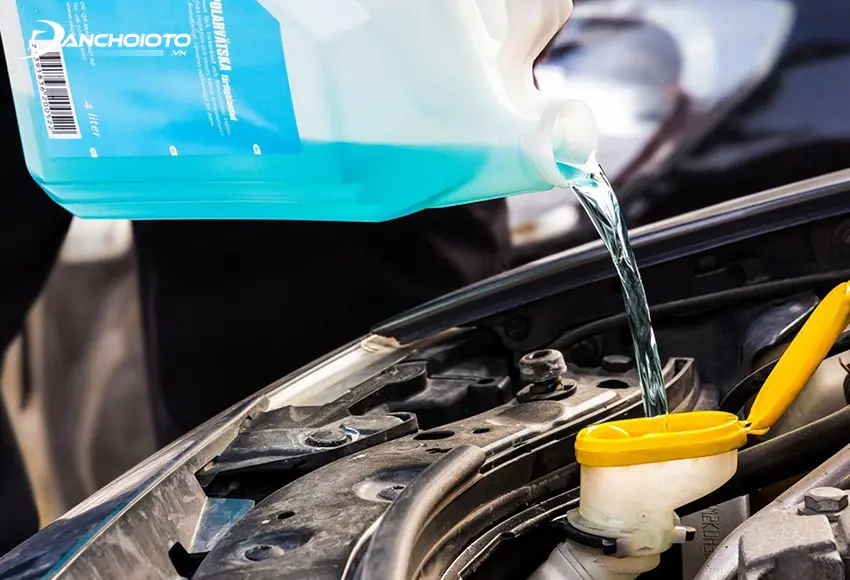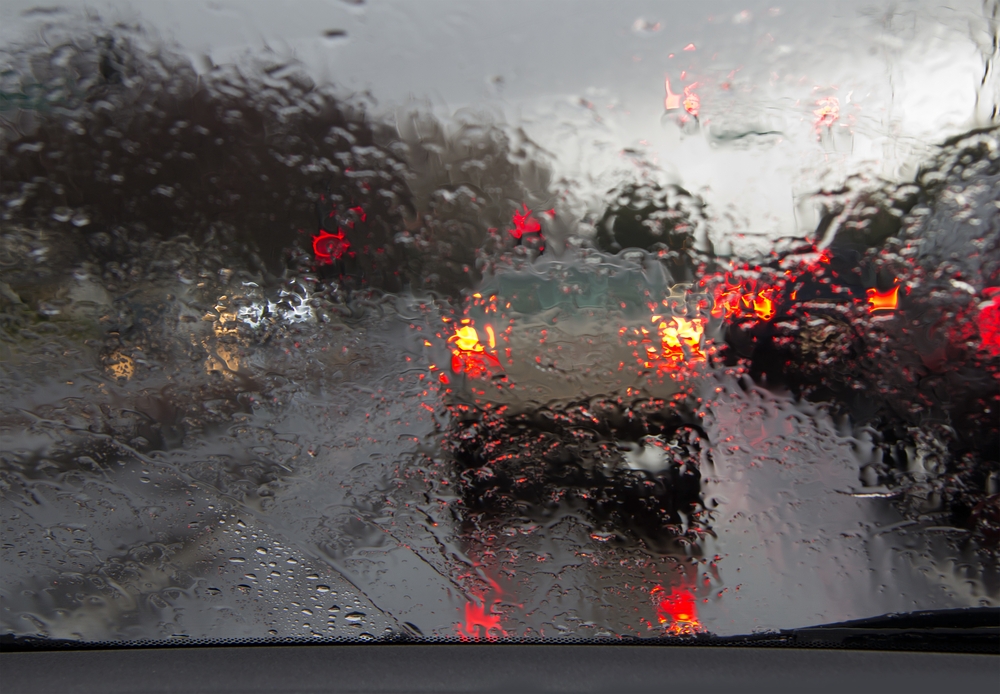Driving in rainy and stormy weather can be challenging and dangerous, even for experienced drivers. Wet roads, reduced visibility, and strong winds increase the likelihood of accidents. To ensure safety, it’s crucial to adopt proper techniques and take precautions during such conditions. Whether you’re driving through a light drizzle or navigating a full-blown thunderstorm, following specific tips can help you stay safe and maintain control of your vehicle. In this article, we’ll explore essential safe driving practices for wet and stormy weather, covering everything from vehicle preparation to on-road strategies.
1. Ensure Your Vehicle is in Top Condition
Before hitting the road in rainy or stormy weather, ensure that your car is fully prepared to handle challenging conditions. A well-maintained vehicle significantly reduces the risk of mechanical failures during adverse weather.

Key Steps to Prepare Your Car:
- Check Your Tires: Proper tire tread depth is essential for maintaining traction on wet roads. Ensure your tires are inflated to the manufacturer’s recommended pressure to prevent hydroplaning.
- Inspect Windshield Wipers: Replace worn-out wiper blades to maintain clear visibility. Effective wipers are crucial for clearing rain and improving road visibility.
- Test Your Brakes: Properly functioning brakes are vital in slippery conditions. If you notice any squeaking or reduced braking power, have your brakes checked by a professional.
- Top Off Fluids: Make sure your windshield washer fluid, engine oil, and coolant levels are adequate. This ensures optimal performance in inclement weather.
Preparing your vehicle for wet weather ensures you’re ready for unexpected challenges, providing a safer driving experience.
2. Slow Down and Maintain a Safe Following Distance
Speeding in rainy weather is a recipe for disaster. Wet roads reduce tire traction, increasing the time required to stop your vehicle.
Why Speed Reduction is Crucial:
- Reduced Traction: Rainwater mixes with oil and debris on the road, creating slippery surfaces. Driving at slower speeds minimizes the risk of losing control.
- Extended Stopping Distance: A greater stopping distance is necessary when roads are wet. Maintaining a safe distance from the car ahead allows ample time to brake safely.
- Hydroplaning Prevention: Driving at high speeds increases the risk of hydroplaning, where your tires lose contact with the road surface.
To stay safe, reduce your speed and leave at least a 3-second gap between your vehicle and the one in front of you.
3. Turn on Your Headlights
Visibility is often compromised during rainy and stormy weather. Turning on your headlights improves your ability to see the road and ensures other drivers can see your vehicle.
Headlight Usage Tips:
- Low Beams Over High Beams: Use low beams in heavy rain, as high beams can reflect off water droplets and reduce visibility.
- Daytime Visibility: Even during daylight hours, headlights increase your visibility to other drivers in poor weather conditions.
- Check Headlight Functionality: Ensure both headlights are working properly before heading out in the rain.
Proper use of headlights enhances safety for you and everyone on the road.
4. Avoid Sudden Movements
Sudden braking, sharp turns, or quick accelerations can lead to loss of control in wet conditions. Smooth and gradual movements help maintain traction and stability.
Driving Techniques for Wet Roads:
- Brake Gradually: Apply steady pressure to the brakes to avoid skidding. If your car has anti-lock brakes (ABS), maintain consistent pressure without pumping the brakes.
- Take Turns Slowly: Reduce your speed before entering curves to prevent sliding.
- Accelerate Gently: Gradual acceleration prevents your tires from spinning on slick surfaces.
By driving smoothly and avoiding abrupt movements, you minimize the risk of accidents on slippery roads.
5. Stay Away from Puddles and Flooded Areas
Driving through standing water or flooded roads can be extremely dangerous. Water can hide deep potholes or cause your vehicle to lose traction.
Risks of Driving Through Water:
- Hydroplaning: Even shallow puddles can cause your vehicle to skid.
- Engine Damage: Driving through deep water can lead to engine failure, especially if water enters the air intake system.
- Loss of Control: Flooded roads may carry strong currents, making it difficult to maintain control of your vehicle.
If you encounter standing water, try to avoid it entirely. If unavoidable, proceed slowly and steadily to minimize risks.
6. Understand Hydroplaning and How to React
Hydroplaning occurs when a layer of water separates your tires from the road, causing a loss of traction. This can be terrifying, but knowing how to respond is crucial.
Steps to Handle Hydroplaning:
- Don’t Panic: Stay calm and avoid overreacting.
- Ease Off the Gas Pedal: Gradually reduce your speed without slamming the brakes.
- Steer Straight: Keep the steering wheel steady and avoid sudden movements.
- Regain Control: Once you feel your tires reconnect with the road, gently steer as needed.
Practicing these steps can help you regain control and avoid serious accidents.
7. Use Defoggers to Maintain Clear Windows
Rain and humidity can cause your car windows to fog up, reducing visibility. Using defoggers ensures a clear view of the road ahead.
How to Prevent Foggy Windows:
- Turn On Defrosters: Activate your car’s front and rear defrosters to clear moisture from the glass.
- Adjust Climate Control: Use air conditioning or set the temperature to match the outside air to prevent condensation.
- Keep Windows Clean: Regularly clean the interior of your windows to prevent dirt buildup, which exacerbates fogging.
Clear windows are essential for safe driving in poor weather conditions.
8. Be Cautious on Bridges and Overpasses
Bridges, overpasses, and shaded areas tend to freeze or become slippery faster than regular roads, even during mild rain.
Why These Areas Are Risky:
- Temperature Differences: These structures lose heat more quickly than roads, making them prone to icy or slick surfaces.
- Reduced Traction: Water often pools on bridges and overpasses, increasing the likelihood of skidding.
Slow down and exercise extra caution when driving over these areas during rainy weather.
9. Plan Your Journey and Stay Updated
Driving in severe weather conditions can become more dangerous if you’re unprepared. Checking the forecast and planning your route ahead of time can save you from unnecessary risks.
Travel Planning Tips:
- Check Weather Reports: Stay updated on current weather conditions before leaving home.
- Avoid High-Risk Areas: Avoid routes prone to flooding or heavy traffic during storms.
- Inform Someone of Your Plan: Let a family member or friend know your route and expected arrival time.
Being proactive helps you avoid hazardous situations and ensures a smoother journey.
10. Stay Calm and Focused
Finally, maintaining a calm and focused mindset is crucial during inclement weather. Avoid distractions, keep both hands on the wheel, and stay attentive to your surroundings.

Tips for Staying Focused:
- Eliminate Distractions: Keep your phone on silent and avoid using it while driving.
- Listen to Weather Updates: Tune into local radio stations for real-time weather and traffic updates.
- Take Breaks: If you feel stressed or fatigued, pull over to a safe area and rest before continuing your journey.
A clear mind and focused attention can make all the difference in navigating rainy and stormy conditions safely.
Conclusion
Driving safely in rainy and stormy weather conditions requires a combination of preparation, cautious driving, and situational awareness. From ensuring your vehicle is in top condition to maintaining a calm mindset, these tips can help you stay safe on the road. Remember, your safety and that of your passengers should always come first. By following these guidelines, you can confidently tackle any stormy weather with ease.

Leave a Reply